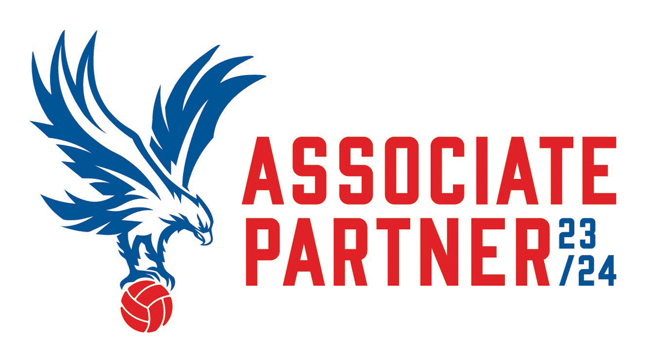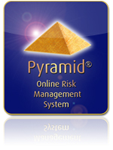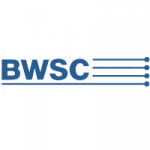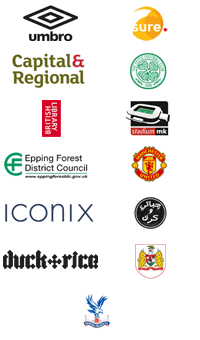The 12 Health and Safety Myths of Christmas and Their Origins
In this article we are going to investigate the HSE (Health and Safety Executive) 12 health and safety myths of Christmas and discover where and how the myths were started. The myths are courtesy of the HSE myth buster panel.
1. Workers are banned from putting up Christmas decorations in the office
What the HSE Myth Busters Challenge Panel says
Bah Humbug! Each year we hear of companies banning their workers from putting up Christmas decorations in their offices for ‘health and safety’ reasons, or requiring the work to be done by a ‘qualified’ person.
Most organisations including HSE and local councils manage to put up their decorations, celebrating the spirit of Christmas without a fuss. They just sensibly provide their staff with suitable step ladders to put up decorations rather than expecting staff to balance on wheelie chairs.
How did this myth start?
This myth came to the attention of the HSE after Royal Bank of Scotland had banned staff in its City offices from putting up Christmas decorations because it could cause fire or injury. A memo was circulated to employees which said: “On no account should anyone stand on desks or chairs and attempt to hang decorations themselves, in case of injury”. Staff were told to book an engineer who would hang the decorations on the ceiling for them.
2. Indoor Christmas lights need a portable appliance test (PAT) every year
What the HSE Myth Busters Challenge Panel says
Lots of companies waste money in the false belief they need to test their Christmas lights annually, or even don’t put them up at all! By following a few sensible precautions, such as checks by the user for obvious signs of damage, every workplace can switch on safely and sparkle!
How did this myth start?
Poor advice was given on-line from Christmas light suppliers that if you are buying second-hand Christmas lights that you need to make sure they are PAT tested. This advice evolved into the myth that your Christmas lights must need PAT testing every year.
3. You can’t throw out sweets at pantos
What the HSE Myth Busters Challenge Panel says
Health and safety rules were blamed when a panto stopped throwing out sweets to the audience. In fact they were worried about the cost of compensation if anyone got hurt.
Realistically, if a panto throws out sweets the chances of someone being seriously hurt is incredibly low. It’s certainly not something HSE worries about – as far as we’re concerned, this is a case of ‘Oh yes you can!’
How did this myth start?
Back in 2010, council officials decided it was a health and safety risk to throw hard boiled sweets into the audience of an Aladdin pantomime in Barrow, Cumbria. They recommended that marshmallows were a much better option.
4. Santa needs a seatbelt in his sleigh
How did this myth start?
A UK national newspaper published an article stating health and safety regulations are forcing Santa who makes a visit to Halesowen in the West Midlands to wear a specially made seatbelt. This article prompted a response from the HSE. You can read the response below…
What the HSE Myth Busters Challenge Panel says
Sir,
Colin Bower rightly describes as ‘ludicrous’ (Letters, 3 December) the decision that Halesowen’s Santa Claus must wear a seat belt in his sleigh. He then makes a reindeer style leap to assume that the Health and Safety Executive (HSE) insisted on this stricture. HSE had no involvement whatsoever in this matter; our concern is addressing the risks that cause 240 workplace deaths and over 140,000 significant injuries a year.
Yours faithfully
Geoffrey Podger
Chief Executive
HSE
5. Second hand toys can’t be donated for ‘health and safety’ reasons
How did this myth start?
The HSE were prompted to reply (please see the response below) to an article about Amman Valley Hospital’s toybox appeal where people were asked to donate new toys for children and young people. It was stated that the toys must be new for health and safety reasons.
What the HSE Myth Busters Challenge Panel says
Dear Editor,
Following your recent story about the excellent Carmarthenshire Christmas Toybox scheme, (14 Nov) I would like to point out that there are no health and safety reasons for not donating second hand toys.
Although I’m sure the organisers will want to make sure any items are clean and in good condition, there is no reason why a good second-hand toy should not make a great present for a child over Christmas.
It takes extra time and manpower to check the condition of used toys and there may be valid insurance or compensation issues involved, so I fully sympathise with the difficulties organisers face, but the good news is there no health and safety regulations saying this can’t be done.
I would like to take this opportunity to wish the Christmas Toybox scheme well and hope this initiative is a great success.
Yours Sincerely,
Jane Lassey
Head of Operations
HSE Wales
6. Traditional shopping centre Christmas trees scaled back or replaced by artificial alternatives
What the HSE Myth Busters Challenge Panel says
We often hear excuses about the way shops and town centres have (or haven’t!) been decorated,especially if they appear less festive than in previous years.
These include traditional Christmas trees being scaled back or replaced with artificial alternatives for ‘health and safety’ reasons.
A traditional Christmas tree will probably cost a bit more and perhaps that’s one of the real reasons behind these decisions – but let’s be clear, health and safety laws exist to prevent people being seriously injured or made unwell at work, they are certainly not there to ‘cut down’ the festive spirit!
How did this myth start?
Back in 2009, a fake Christmas was assembled in Poole, Dorset due to the risk of a real Christmas tree being blown over in the wind and injuring shoppers. Residents of the area protested against the fake Christmas tree (which looked like a giant traffic cone) by ruining the tree with vandalism. The residents joined a Facebook campaign calling for the artificial tree to be replaced. The tree was replaced with a 30ft traditional Christmas tree.
7. Seats removed from shops – despite weary Christmas shoppers wanting to rest their feet
What the HSE Myth Busters Challenge Panel says
Give it a rest! When Christmas shoppers have been dashing through the crowds for those last minute bargains all they want is a quick sit down to rest their weary feet.
So you can imagine their dismay when they find all the seats have been removed for ‘health and safety’ reasons!
Of course shops need to manage crowds of people safely, but it’s a myth to suggest that it’s a requirement to remove seats at busy times, instead a bit of common sense should ensure seating is located in a sensible place.
How did this myth start?
Seats were removed in a shopping centre in Carlisle at Christmas time and were replaced with kiosks to the outcry of local residents. Discussions started turning into health and safety reasons for the removal of the seating. The manager of the shopping centre had no other choice but to release a statement saying that the seats were being removed so they could be replaced in January.
8. Carol singers are a health and safety risk
What the HSE Myth Busters Challenge Panel says
Surely no-one would object to hearing the dulcet tones of carol singers serenading us in the run up to Christmas!
Well, in the past few years we’ve heard of insurance companies producing comprehensive ‘health and safety’ guides for people wishing to take part in this age old tradition, and parish councils ordering groups of singers to apply for a permit in order to stop them upsetting home-owners.
Well-intentioned pieces of advice such as ‘don’t sing in the road’ and ‘don’t carry large amounts of cash’ are not health and safety requirements, they are simple common sense.
How did this myth start?
Carol-singing Brownies and Guide were banned from a shopping centre in Hemel Hempstead because they were considered a health and safety risk as their presence obstructed fire escape routes. In previous years, a group of up to 100 girls would attend. The ban was lifted when the manager of the centre offered to allow 20 girls to sing.
9. Children are banned from throwing snowballs
What the HSE Myth Busters Challenge Panel says
Every year we hear inaccurate stories about children who aren’t allowed to throw snowballs, and swimmers who can’t take their traditional winter dip in the local lake. All this in the name of health and safety.
If we spend time on the trivial risks there’s a chance we’ll miss the most important ones. We need to focus on finding ways for things to happen, not reasons to stop them – a sensible approach to managing risk focuses on practical action to tackle risks that cause real harm and suffering.
How did this myth start?
As the HSE states, every year they hear about snowball health and safety risks but there was one incident that took place in 2007 that made the headlines. Pupils were sent home and suspended from a school in Peterborough for throwing snowballs. The headteacher of the school defended the decision saying the teenagers had broken a snowball fight ban.
10. If you clear snow from outside your business or home you are likely to get sued
What the HSE Myth Busters Challenge Panel says
Dear Editor,
I would like to make it clear that under health and safety legislation nobody who volunteers to support their community by clearing pavements during icy conditions should feel they are in danger of being sued.
The Health and Safety Executive (HSE) encourages a common sense approach to health and safety, and agrees with your reader that “clearing the snow and ice…makes it easier for people to get about.”
HSE is focused on the real safety risks at work, and we think it is ridiculous that people should feel prevented from helping others, through a fear of being held responsible for an accident.
Yours sincerely,
Terry Rose
Regional Director, South West
Health and Safety Executive
The Pithay, All Saints Street
Bristol BS1 2ND
How did this myth start?
This myth started after the Institution of Occupational Safety and Health gave a warning that clearing show could lead to legal action. This statement prompted the response from the HSE above. This statement also caused uproar around the country with even Ann Widdecombe, the former Tory minister and critic of Britain’s burgeoning “compensation culture”, saying “The idea you can be sued for being helpful is absolutely ludicrous.”
11. Health and safety prevents people putting coins in Christmas puddings
What the HSE Myth Busters Challenge Panel says
Finding a coin in your pudding on Christmas day – it’s a tradition that’s lasted for more than 500 years and is said to grant you a good luck wish for the coming year.
However, killjoys have been stirring up trouble saying it’s too risky to put coins inside puddings for ‘health and safety’ reasons.
Occupational health and safety law is concerned with what goes on in your workplace, not what you’re eating after a Turkey dinner – it doesn’t prevent coins or any other lucky charms being put in puddings.
If we had one wish, it would be to stamp out the health and safety Scrooges who try to dampen the Christmas spirit.
How did this myth start?
Sainsbury’s supermarket had hopes of selling Christmas puddings with “Lucky Sixpences” inside for Christmas in 2005. They were not allowed to go ahead with the plans as putting the coins in the puddings would “constitute a choking hazard” and because many shop-bought Christmas puddings are now heated in a microwave oven which could be dangerous.
12. Elf n Safety ruins Christmas!
What the HSE Myth Busters Challenge Panel says
Don’t believe everything you read!
Over the past 11 days our mission has been to ‘sleigh’ the most commonly encountered festive health and safety myths. Yet, the myth we hear most often of all is that ‘elf n safety’ has ruined Christmas.
We hear of events being cancelled, Santa stopped from parading in his sleigh, and festive displays being banned, all blamed on ‘Health and Safety’ reasons.
Health and safety laws exist to provide safeguards against people being seriously injured or made unwell at work, not to hamper fun activities.
So on that note, we’d like to say Bah Humbug to all the festive killjoys out there and a very happy Christmas to everyone else!
How did this myth start?
We would like to round this article up in the same manner as the HSE by wishing you all a very merry Christmas and a happy and healthy New Year!









